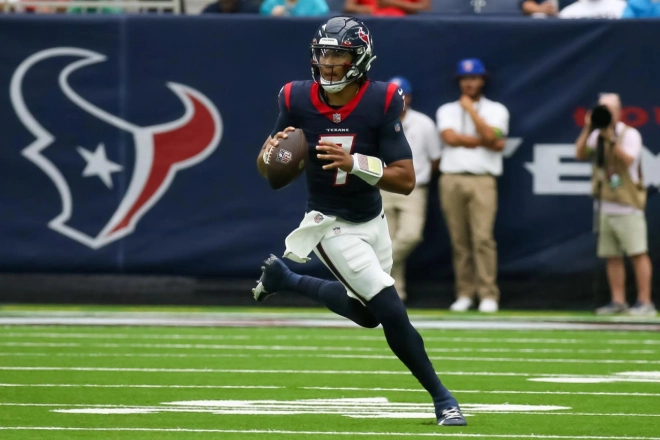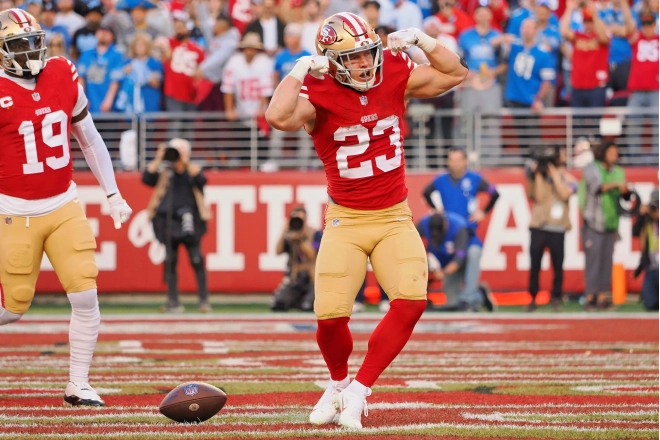In the pulsating realm of dynasty football, the symphony of choices continues its celestial dance. After the echoes of a championship season reverberate, the focus seamlessly shifts to the next movement—the cultivation of young talents, the pillars that will uphold the dynasty's future. This chapter, titled "Building Blocks," unveils the intricate art of identifying and nurturing emerging stars, with a specific emphasis on rookies poised to shape the dynasty landscape. In the aftermath of my fantasy championship, the immediate task was to transform my roster, necessitating the removal of five players from my taxi squad to accommodate incoming rookies.
As the offseason progressed, the realization dawned that my team urgently required additional running back assistance. Despite Saquon Barkley's instrumental role in securing a title, the strategic decision to move him, while still relevant and capable of yielding returns, aligned with one of my favorite dynasty football strategies—emulating the tactics of Bill Belichick and the New England Patriots. The mantra, "It's better to trade a player too soon than too late," became the guiding principle as I embarked on reshaping my team. Another favored strategy involved acquiring 2nd round picks in rookie drafts, a seemingly counterintuitive but flexible approach with the potential to yield significant talent or future first-round picks at a lower cost.
Approaching the 2023 rookie draft, the initial task was to identify my first pick. Operating in a snake draft format, I held the 1.12 pick due to winning the league the previous year. However, a trade earlier in the season secured me the 1.10 instead, opening up possibilities for a solid player. With a focus on bolstering the running back position, research led me to Zach Charbonnet.
Grounding the Dynasty Foundation Dynasty success hinges on a sturdy foundation, and Zach Charbonnet epitomized the importance of a reliable ground game. As a rookie running back with the potential for both power and agility, Charbonnet emerged as a cornerstone in my pursuit of a well-rounded roster. His role in the dynasty chessboard underscored the significance of cultivating talent in positions that withstand the test of time. Projected as the third RB off the board, Charbonnet was a strategic pick at 1.10, offering not only immediate value but also potential trade leverage given the perceived overvaluation of running backs. Charbonnet proved to be a sound choice at that spot in the draft. Subsequently, I traded him for additional help at the WR position.
My next selection came at 2.2, only four picks after Charbonnet. Prioritizing the enhancement of my WR core and depth, the strategy was to identify rookie WRs with solid day 1-3 draft capital. This led me to draft:
Jonathan Mingo: Physical dominance became a distinct note, and Jonathan Mingo's powerful presence on the field resonated with this theme. Mingo's journey serves as a case study in harnessing raw athleticism and molding it into a force capable of shaping the destiny of a dynasty team. Drafted in the 2nd round of the NFL draft by the Carolina Panthers, Mingo's potential to be a #1 WR in their offense made him a compelling pick. Mingo's rookie season was decent, and while he didn't outperform other 1st-year players, he has become a reliable depth option with flex starter potential. Though not a stud, Mingo remains on my roster unless a tempting offer arises.
With the 2.4 pick in hand, the convenience of not having to wait long to make another selection allowed me to target a rookie I was high on:
Josh Downs: The crescendo of success often accompanies unexpected talents like Josh Downs. The underdog narrative unfolded as Downs, an unheralded rookie wide receiver, defied expectations and emerged as a cornerstone of my dynasty roster. Exploring the nuances of scouting and recognizing the potential for growth in seemingly unremarkable prospects became a crucial part of the dynasty-building process. Downs exceeded expectations, having a great and underrated rookie year. Projected to be even better in the future, he stands as one of my best picks in this rookie draft. Unless presented with an irresistible offer, Downs will remain a crucial asset on my roster.
At this juncture, my rookie draft picks included Zach Charbonnet, Jonathan Mingo, and Josh Downs—solid results given my initial pick at 10th overall. This aligns with my strategy of prioritizing depth over studs, opting for multiple chances rather than banking on a supposed "generational talent." Now halfway through the rookie draft, the remaining picks were the 2.8, 4.1, and 5.12. Having traded away all my thirds during the season and with three top rookies secured, I aimed to take calculated fliers on players in the 4th round and beyond. This led to my next pick at 2.8:
Marvin Mims: With his polished route running and ability to orchestrate receptions, Mims stepped into the spotlight as a player epitomizing the crafting of a dynasty maestro. Mims, a receiver that I believed had a good chance to perform well based on the Broncos' draft move, became a strategic pick at 2.8. Mims' performance was somewhat disappointing in his rookie year. While he played in 16 games, his limited targets made him fall short of being a starting option. Despite this, I see potential for improvement in 2024. If a tempting trade offer arises, I may consider it, looking to acquire more assets and potentially reacquire Mims later in the offseason as the rookie hype diminishes.
The subsequent pick, at 4.10, aimed to bolster the running back position:
Chris Rodriguez: At this stage of the rookie draft, Rodriguez emerged as the best player available. With his upside in Washington and potential as the #2 or #3 option behind Antonio Gibson and Brian Robinson, Rodriguez was a calculated choice. The possibility of immediate dividends if Gibson or Robinson got hurt, coupled with the option to trade him to another owner recognizing his upside, made Rodriguez a strategic pick. Rodriguez was traded a week after drafting him for Cedric Tillman, a third-round receiver. Given the nature of the RB position, the deal was too good to pass up. Rodriguez performed well as a backup for the Commanders, positioning himself to potentially become the #2 RB in 2024. Meanwhile, Tillman saw limited playing time for Cleveland, prompting my decision to explore a trade for additional draft capital.
The final pick in the rookie draft, at 5.12, aimed to take a flier on another running back:
Lew Nichols: Drafted by the Green Bay Packers, Nichols was seen as a potential upside play. With Aaron Jones and A.J. Dillon having injury histories, Nichols presented an opportunity to go from having a relative unknown to possessing a valuable running back asset. The strategic rationale mirrored the earlier selection of Rodriguez. Similar to Rodriguez, Nichols was traded a week after the rookie draft for Tyler Scott, a receiver drafted by the Chicago Bears. The trade was driven by the perceived upside and longevity at the position, outweighing the need for immediate running back help. Though both Scott and Nichols did not make significant fantasy impacts in 2023, the roster spots were repurposed for more impactful players.
While the rookie draft infused hope for the future, it also marked my inaugural venture into team-building through the dynasty lens. The strategy of focusing on WRs while taking calculated fliers on RBs in later rounds yielded positive outcomes, a pattern likely to be prioritized in year two of this dynasty league. Subsequent trades enriched the team with rookies like Rashee Rice and Michael Mayer, highlighting the ongoing quest for a balance between veterans and younger players—a fun and unique challenge in the ever-evolving landscape of dynasty football.
As we navigate the labyrinth of dynasty football, "Building Blocks" serves as a guide to identifying, nurturing, and strategically integrating young talents. Each player highlighted in this symphony contributes a unique note to the dynasty composition, creating a harmonious blend of potential, strategy, and foresight. The mastery of building blocks becomes the key to orchestrating a sustained symphony of success. In our next article, "Trade Wars," we'll delve deeper into my approach to trades, showcasing successful deals, analyzing player value, and examining negotiation tactics in the ever-evolving landscape of dynasty football.





